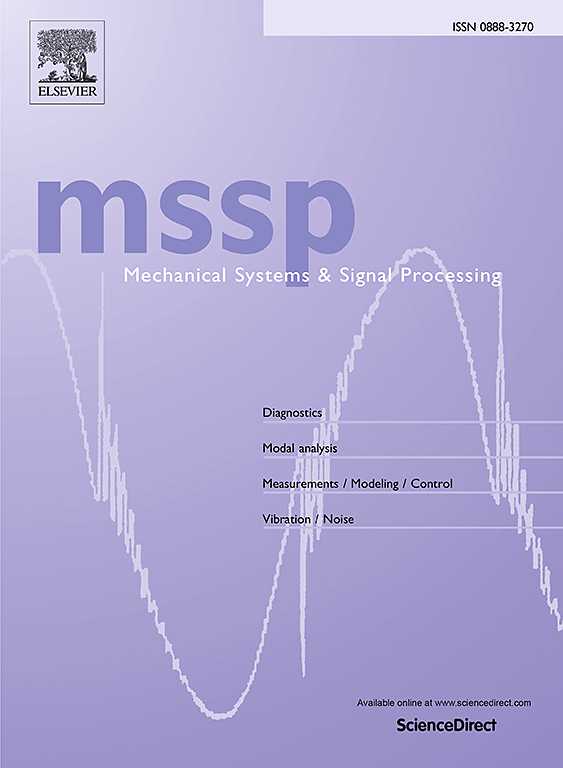IF 7.9
1区 工程技术
Q1 ENGINEERING, MECHANICAL
引用次数: 0
摘要
非线性分量啁啾分析(NCCA)旨在从瞬时线性混合模型中提取非稳态源信号和混合向量,这在盲源分离(BSS)问题中很常见。然而,有几个挑战限制了它的实际应用:(i) 源信号的数量必须预先确定;(ii) 计算时间随源信号数量的增加而显著增加;(iii) 带宽参数在整个过程中保持固定。为了解决这些问题,本文提出了连续 NCCA 方法。在这种方法中,源信号被视为非线性啁啾模态 (NCM),并在递归框架中依次被连续 NCCA 捕捉,直到残余信号的能量比低于设定阈值为止。这种方法无需预先确定源信号的数量,大大减少了计算时间。此外,源信号和残差信号之间的正交指数(IO)可用于自适应调整带宽参数。通过一系列合成信号来评估 Successive NCCA 的性能,包括其模式对齐能力、欠定盲源分离(UBSS)能力、滤波器库结构、计算效率和收敛特性。最后,将 Successive NCCA 应用于多通道脑电图 (EEG) 数据中 α 节拍的分离和时变振动系统的分析。本文章由计算机程序翻译,如有差异,请以英文原文为准。
Successive Nonlinear Chirp Component Analysis
Nonlinear Component Chirp Analysis (NCCA) is designed to extract non-stationary source signals and mixing vectors from instantaneous linear mixing model, which is commonplace in blind source separation (BSS) problems. However, several challenges limit its practical application: (i) the number of source signals must be predetermined; (ii) computation time increases significantly with the number of source signals; and (iii) the bandwidth parameter remains fixed throughout the entire process. To address these issues, this paper proposes Successive NCCA. In this approach, source signals are treated as Nonlinear Chirp Modes (NCMs) and are sequentially captured by Successive NCCA in a recursive framework, continuing until the energy ratio of the residual signal falls below a set threshold. This method eliminates the need to predetermine the number of source signals and significantly reduces computation time. Additionally, the Index of Orthogonality (IO) between the source signal and the residual signal is used to adaptively adjust the bandwidth parameter. A series of synthetic signals is employed to evaluate the performance of Successive NCCA, including its mode alignment capability, underdetermined blind source separation (UBSS) ability, filter-bank structure, computational efficiency, and convergence properties. Finally, Successive NCCA is applied to the separation of -rhythms in multichannel electroencephalogram (EEG) data and the analysis of time-varying vibration systems.
求助全文
通过发布文献求助,成功后即可免费获取论文全文。
去求助
来源期刊

Mechanical Systems and Signal Processing
工程技术-工程:机械
CiteScore
14.80
自引率
13.10%
发文量
1183
审稿时长
5.4 months
期刊介绍:
Journal Name: Mechanical Systems and Signal Processing (MSSP)
Interdisciplinary Focus:
Mechanical, Aerospace, and Civil Engineering
Purpose:Reporting scientific advancements of the highest quality
Arising from new techniques in sensing, instrumentation, signal processing, modelling, and control of dynamic systems
 求助内容:
求助内容: 应助结果提醒方式:
应助结果提醒方式:


